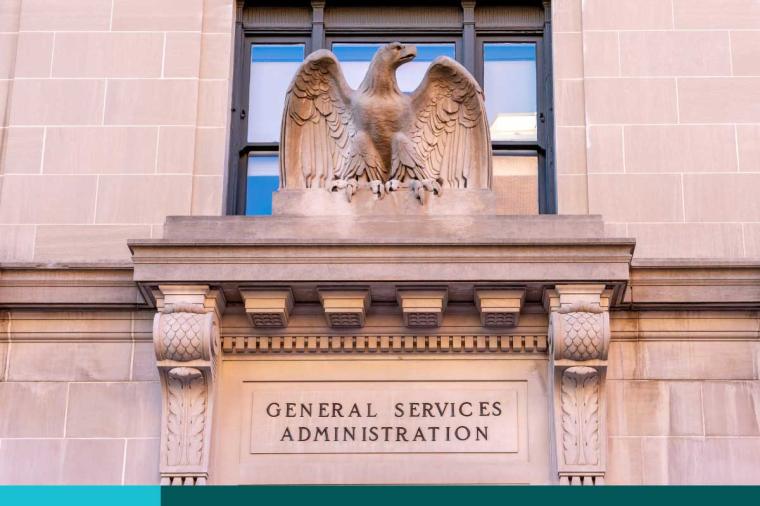Back To School: FITARA’s Latest Assessments

Originally passed in 2014, the Federal Information Technology Acquisition Reform Act (FITARA) was designed to improve the management of all-things-IT across federal agencies. It essentially realigned how the government purchases and updates its technology, with an aim at grading agencies based on their ability to adhere to and improve on the following categories:
- Agency CIO Authority Enhancements
- Data Center Optimization Initiative
- Portfolio Review
- Transparency and Risk Management
- Software Licensing
- Cyber
- Modernizing Government Technology
- Transition off Networx
- CIO Investment Evaluation
- Cloud Computing
Since its inception, the federal government has released a scorecard assessing agencies’ performances with detailed definitions of the above criteria available here. It posts bi-annually, with the seventeenth version just listed this past week. So, what did we learn from this latest iteration? Who is doing well and who is not? And what does that reveal specifically to IT companies looking for opportunity in the federal space?
The Results
The accepted grading scale we are all familiar with would have us believe an A on FITARA’s assessment signals the best, most successful agencies. And that is mostly true. The latest scorecard revealed overall scores of 1 A, 10 Bs, 10 Cs, and 3 Ds.
United States Agency for International Development (USAID) received that one A for its fifth consecutive year. Their efforts toward enhancing cyber capabilities, enabling an agile development methodology, and coming in at or above average compared to all agencies for each noted category has kept them at the forefront of FITARA’s metrics. Considering most agencies received Bs and Cs, we will look next at the other end of the spectrum, and see which agencies scored a D, and why.
Health and Human Services (HHS), Department of State (DoS), and the Department of Transportation (DoT) each received an overall D grade for the latest scoring. While its transition off General Services Administration’s (GSA) Governmentwide Acquisition Contracts (GWAC) Networx progress was notably above average, HHS is at or below average other agencies when it comes to both the chief information officer (CIO) investment evaluation and cyber categories. DoS saw below-average scores in cyber, cloud computing, CIO investment evaluation, and the transition off Networx as well. Also receiving a D grade was the Department of Transportation. It scored below average of all agencies in every category except modernizing government technology. Having a conversation with HHS, DoT, and/or DoS end-users to see where your product or service might help close the gap in these needs could place you in a valuable position for crafting future procurements aimed at bolstering cyber and cloud needs, aiding in increasing these scores overtime.
So What?
Short of labeling the lower-graded agencies as part of a doom-and-gloom category, instead, look to these results as opportunities. To be fair, if all agencies received an A grade, that would indicate all was well, and industry would not be needed to continue developing and executing on technological advancements. On the contrary, there is plenty of actionable opportunity here.
It is worth examining not just the overall agencies’ results, but the specific high or low performers for categories. Of those in play, agencies across the board averaged a D in cloud computing, which happens to also be the newest assessment. This metric is based on the United States Office of Management and Budget’s (OMB) Federal Cloud Computing Strategy; a long-term, high-level guidance that notes five key requirements focused on ensuring that the CIO oversees modernization, agency cloud-related policies and guidance are iteratively improved, service level agreements are in place, service level agreement contracts are standardized, and visibility in high value asset contracts is continuously ensured.
The door for cloud needs remains very much open, with continued support for both hybrid and on-prem solutions seeing traction and available dollars. Between FITARA, Cloud Smart and FedRAMP, the government has made it clear end-to-end cloud computing products and services are in high demand, along with all their accompanying security-related components. Notably, the DoD was the only agency to receive an A for the cloud category in the latest scorecard.
FITARA’s categorical results also indicate the ongoing push to transition off Networx. GSA is responsible for contracts that provide telecommunications services for federal agencies. They developed the Enterprise Infrastructure Solutions (EIS) in preparation for the expiration of the previously utilized Networx; however, delays during the transition to Networx resulted in hundreds of millions of dollars in missed savings. Networx contracts expired in May 2023, but GSA has granted extensions to agencies that have not yet completed the transition. While the transition for agencies is not directly applicable to corporations, understanding and being on the EIS GWAC moving forward will serve greatly to position IT vendors and partners for an array of IT needs over the course of the contract’s anticipated 15-year span.
The Cyber category, which works in conjunction with the Federal Information Security Modernization Act (FISMA) to promote security tools, as well as monitor and diagnose vulnerabilities, also remains as area in need of improved scoring for most agencies. Cybersecurity needs are not going anywhere; we know that. So, if you are in that space, look to target the following agencies who all received below-average ratings in that segment: DoC, Energy, HHS, HUD, DoS, Transportation, NASA, OPM, SBA, and the VA.
Up Next
The next FITARA scorecard will likely be published in July of 2024. Until then, we see the path of federal priorities sketched out at least for the next six months primarily leaning to cloud and cyber needs. And while FITARA is only one indicator, IT products and solutions in those categories have been and will clearly continue to be highly sought after by all federal agencies seeking solutions from the IT market.
To get more TD SYNNEX Public Sector Market Insight content, please visit our Market Intelligence microsite.
About the Author:
Susanna Patten is a manager for public sector intelligence on the TD SYNNEX Public Sector Market Insights team covering the DoD and tech domain centric trends across the Public Sector.


































